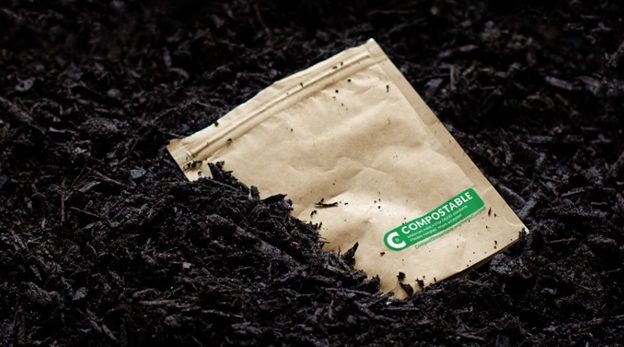In an era where environmental consciousness is at the forefront of consumer and business decisions alike, the quest for sustainable alternatives has become more pressing than ever. One area where significant strides have been made is in packaging, with compostable packaging emerging as a viable solution to mitigate the environmental impact of traditional packaging materials. This blog explores the environmental benefits of switching to packaging and the positive implications it holds for our planet.
Understanding Compostable Packaging
This refers to packaging materials that are designed to break down into natural, non-toxic components when disposed of properly in a composting environment. Unlike traditional packaging materials such as plastic, which can persist in the environment for hundreds of years, packaging offers a more sustainable end-of-life solution. Compostable materials are typically derived from renewable resources such as plant-based fibers, starches, or biodegradable polymers, making them an eco-friendly alternative to conventional packaging options.
Reducing Plastic Pollution
Plastic pollution has become a global environmental crisis, with devastating consequences for ecosystems, wildlife, and human health. Traditional plastic packaging contributes significantly to this problem, as much of it ends up in landfills, oceans, and waterways, where it persists for centuries, releasing harmful chemicals and endangering marine life. Switching to packaging helps mitigate plastic pollution by offering a biodegradable alternative that breaks down into organic matter, water, and carbon dioxide, leaving behind no harmful residues or microplastics. By reducing our reliance on plastic packaging and embracing compostable alternatives, we can take significant strides towards a cleaner, healthier planet.
Conserving Natural Resources
The production of traditional packaging materials such as plastic and paper consumes vast amounts of natural resources, including fossil fuels, water, and forests. In contrast, compostable packaging utilizes renewable resources such as plant-based fibers and biodegradable polymers, which have a lower environmental impact and can be replenished more sustainably. By transitioning to packaging, we can reduce our dependence on finite resources, minimize habitat destruction, and preserve biodiversity. Additionally, compostable materials can often be sourced locally, further reducing the carbon footprint associated with transportation and distribution.
Minimizing Carbon Footprint
The production, transportation, and disposal of traditional packaging materials contribute to greenhouse gas emissions, exacerbating climate change and its associated impacts. Packaging offers a more environmentally friendly alternative by sequestering carbon and reducing overall emissions throughout its lifecycle. For example, compostable materials derived from plant-based sources capture carbon dioxide during photosynthesis and release it back into the soil when composted, contributing to soil health and fertility. Furthermore, composting organic waste, including packaging, helps divert organic matter from landfills, where it would otherwise decompose anaerobically, producing methane—a potent greenhouse gas. By embracing packaging, businesses and consumers can play a role in mitigating climate change and building a more sustainable future.
Promoting Circular Economy
The traditional linear model of production and consumption, known as “take-make-dispose,” is inherently wasteful and unsustainable. Compostable packaging offers a pathway to a circular economy—a regenerative system in which resources are kept in use for as long as possible, with minimal waste and environmental impact. Compostable materials can be integrated into closed-loop systems, where they are collected, composted, and returned to the soil as nutrient-rich compost, closing the nutrient cycle and supporting agricultural sustainability. By promoting the adoption of packaging and investing in composting infrastructure, we can create a more resilient and resource-efficient economy that benefits both people and the planet.
Fostering Consumer Education and Engagement
Education plays a crucial role in driving adoption and acceptance of packaging among consumers. By raising awareness about the environmental impacts of traditional packaging materials and highlighting the benefits of compostable alternatives, businesses can empower consumers to make informed choices and support sustainable solutions. Furthermore, engaging consumers in the composting process can help demystify the concept of packaging and encourage participation in composting programs. Through educational initiatives, outreach campaigns, and transparent labeling, businesses can foster a culture of sustainability and inspire collective action towards a greener future.
Overcoming Challenges and Barriers
While packaging offers numerous environmental benefits, it is not without its challenges and barriers to widespread adoption. One of the main challenges is ensuring proper disposal and composting infrastructure to manage compostable waste effectively. Many regions lack adequate composting facilities and infrastructure, leading to limited options for packaging disposal. Additionally, misconceptions and confusion surrounding compostable materials, such as confusion with biodegradable plastics, can hinder acceptance and uptake. Addressing these challenges requires collaboration between policymakers, industry stakeholders, and consumers to invest in composting infrastructure, standardize labeling and certification, and educate the public about packaging. By overcoming these barriers, we can unlock the full potential of packaging and pave the way for a more sustainable future.
Conclusion
As the world grapples with the urgent challenges of climate change, plastic pollution, and resource depletion, the need for sustainable solutions has never been more apparent. Compostable packaging offers a promising alternative to traditional packaging materials, providing environmental benefits such as reducing plastic pollution, conserving natural resources, minimizing carbon footprint, and promoting a circular economy. By making the switch to packaging, businesses and consumers can contribute to a greener, more sustainable future for generations to come. Let us embrace this greener choice and take meaningful steps towards a healthier planet for all.





